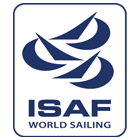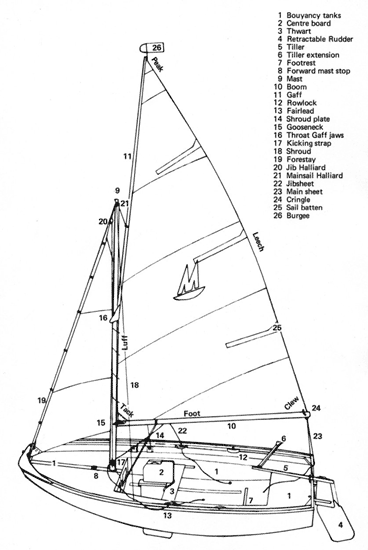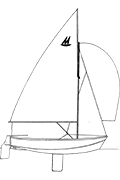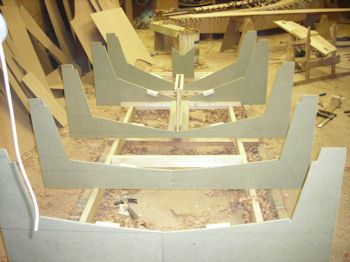2nd Hand Mirror Buyers Guide
The following gives advice on what to look out for when looking at a second-hand Mirror and on how to go about finding one.
POINTS TO CHECK WHEN BUYING A SECOND-HAND WOODEN MIRROR
1) Take a sharp knife with you and examine the floor of the cockpit, especially around the centreboard case, for rot (is the wood firm and resists the point of your knife or is it spongy so that the point goes in easily?) In the same way check the glued joins at this point. Most Mirrors are varnished inside so you can see what the wood is like. Beware of one which has been painted inside, this may have been done to hide signs of rot (dark staining of the wood).
2) Are there any other areas you can see which are stained black under the varnish? This may be a sign that water has penetrated the wood. Again check with your knife in case it is spongy. Some staining of this sort is inevitable with any old boat and will be OK if it has not gone so far as to rot the wood.
3) Look out for any de-lamination of the ply (one layer becoming detached from another). This is a sign of advanced decay and will be expensive to repair (it may need a replacement panel). Examine the glass tape on the seams and joints. It should be the same colour as the surrounding ply. If in places it appears to be milky white it means it was not properly soaked with resin at this point and has become detached from the wood. It should be possible to replace the tape but the work necessary needs to be taken into account.
4) Examine the outside of the hull for signs of damage at the corners and at the edges of the chines. These should all be sharp and (except for the chines near the bow) at fairly acute angles. If they are rounded at some point this may be a sign that the boat has been damaged (dropped on a corner, perhaps, or hit by another boat). All the panels should be evenly curved so look along them at a fairly flat angle to see if there are any bumps or hollows. These could be where the hull has been holed and patched with filler. Again check carefully around the dagger board case from outside. Repairs to the hull may not be serious if they have been done properly but talk to the owner and try to find out how the damage arose and how it was repaired. At the end of the day only you can tell if a repair is acceptable or not.
5) Squat at the stern and look from the stern transom towards the bow transom. The tops of these two transoms should be exactly parallel with each other when viewed from this angle. If they are not this means the hull is twisted. This could be a sign that the boat was not built properly to start with (not kept flat while the glues and resins hardened) or left for long periods half full of water. The amount of twist may not be serious unless you want to race the boat (you will never get good performance from a boat with a twisted hull). Again only you can decide what is acceptable. However, if you do spot a twist, which may be the result of water lying in the hull, go back and check the earlier points again. Water left lying in the bottom of the cockpit is the Mirror's greatest enemy.
6) Finally, do not worry too much about the condition of spars (mast, boom and gaff), foils (rudder blade and centreboard) or fittings. These can easily be replaced. However, do point out problems with these to the owner and try to get a reduction in the price to cover the cost of replacements.
FINDING A SECOND-HAND MIRROR
The question is often asked "how much one should expect to pay for a second-hand Mirror and how to go about finding one?" (This advice is just as relevant, of course, if you are selling a Mirror.)
The price of a second-hand Mirror depends on how well it was built, whether it was built for racing, what condition it is in, whether it has a measurement certificate and what extras it has, rather than on its age (sail number). For example, a successful racing boat built by someone with a reputation for building fast boats will often fetch well in excess of £2,000 even after several seasons' use. A boat of the same age but built by an amateur and knocked about a bit might go for no more than £200.
A boat built by Widebeam or one of the other licensed kit assemblers usually goes for a bit more than a similar boat built by an amateur because the purchaser knows it will have been built to a good standard. But a kit boat built privately with real care and attention to detail can be even better.
Although, as explained above, the sail number is not the most important thing to consider when assessing the value of a boat, it is often the only thing you have to go on when looking at an advert. In such a case a number over 60,000 might go for between £600 and £1,000+. For numbers between 40,000 and 60,000, £300 to £500 would not be unreasonable. Below is a table indicating the age of a boat from its sail number.
Boats with sail numbers of less than 40,000 are usually either very good or very bad, depending how they have been looked after. The bad ones may have rot in the bottom, de-lamination of the ply, deterioration of the taped seams, or a twisted hull. However, the good ones often fetch as much as those with sail numbers over 40,000 since age is not the determining factor.
The best place to find or sell a second-hand Mirror is on the "Message Board" section on this website where "For Sale" and "Wanted" ads can be placed for free. You will be able to see how many people have read your advert and anyone interested will post messages asking for extra information. A lot of boats have been sold here already and it is totally free!
The "For Sale" pages of the magazine "Yachts and Yachting" are a good place to look for second-hand Mirrors, though in a recent editions there were less and less Mirrors for sale, due mainly to the popularity and ease of advertising on the Mirror website. To place an advert ring the Advertising Manager on 01702 582245.
Another good place to look (particularly for non-racing boats) is the Dinghy Trader section of the magazine "Buy a Boat - for under £10,000". To place an advert, call Claire Read on 01243 533394.
Alternatively you could look on the notice board at your nearest Sailing Club or go along and talk to the Mirror sailors at the Club. They will know who is thinking of selling a boat and you will not have so far to travel to view one. Chandlers also sometimes have boards with boats for sale.
Year From Boat To Boat
1963 1 896
1964 870 3058
1965 3059 4547
1966 4578 7489
1967 7490 11060
1968 11061 15467
1969 15468 21015
1970 21016 25633
1971 25634 31788
1972 31789 37840
1973 37841 42935
1974 42936 48011
1975 48012 51276
1976 51277 55470
1977 55471 58752
1978 58753 60973
1979 60974 63409
1980 63410 65050
1981 65051 65992
1982 65993 66600
1983 66601 67000
1984 67001 67606
1985 67607 68075
1986 68076 68250
1987 68251 68500
1988 68501 68785
1989 68786 69020
1990 69021 69180
1991 69181 69310
1992 69311 68454
1993 69455 69580
1994 69581 69706
1995 69707 69756
1996 69757 69830
1997 69831 69915
1998 69916 69962
1999 69963 70031
2000 70032 ------
Finally you will need to Insure your Mirror and we strongly advise you to use the MCA
 Like a lot of brilliant Ideas, the Mirror dinghy literally "just growed". In fact, the first seed was planted by a small boy who complained to his father that when the family dinghy was being used he never had the chance to sail because others always muscled in. Normally, that would have been the end of the matter but, in this case, the lad's father was BBC TV s do-it-yourself expert Barry Bucknell, who characteristically set about making a dinghy to increase the family fleet and train up another helm at the same time.
Like a lot of brilliant Ideas, the Mirror dinghy literally "just growed". In fact, the first seed was planted by a small boy who complained to his father that when the family dinghy was being used he never had the chance to sail because others always muscled in. Normally, that would have been the end of the matter but, in this case, the lad's father was BBC TV s do-it-yourself expert Barry Bucknell, who characteristically set about making a dinghy to increase the family fleet and train up another helm at the same time. The Mirror is an International Class, so its rules are managed by ISAF
The Mirror is an International Class, so its rules are managed by ISAF Mirror National Champion
Mirror National Champion For those with older boats here is the original rigging guide. We plan to add other options later.
For those with older boats here is the original rigging guide. We plan to add other options later. The Mirror is a small, light, easy to sail, easy to transport, pram dinghy. Basically a stable family boat for all ages and abilities, ideal for just "messing about", it is also raced widely and actively both in the UK and abroad. Its ease of handling makes it a very good single-hander. For racing the crew is two but when pottering three can be carried. The boat can be rowed or fitted with a small outboard motor - it can then accommodate four or five people. Ideal for training young people, it is an RYA-adopted Junior Class. Many of the UK's top sailors started in a Mirror! A strict one-design, the Mirror became an International Class in 1989.
The Mirror is a small, light, easy to sail, easy to transport, pram dinghy. Basically a stable family boat for all ages and abilities, ideal for just "messing about", it is also raced widely and actively both in the UK and abroad. Its ease of handling makes it a very good single-hander. For racing the crew is two but when pottering three can be carried. The boat can be rowed or fitted with a small outboard motor - it can then accommodate four or five people. Ideal for training young people, it is an RYA-adopted Junior Class. Many of the UK's top sailors started in a Mirror! A strict one-design, the Mirror became an International Class in 1989. The Mirror was designed to introduce the masses to sailing, with the chance to own your own boat cheaply. Many tens of thousands fulfilled their dreams by building a Mirror from a kit.
The Mirror was designed to introduce the masses to sailing, with the chance to own your own boat cheaply. Many tens of thousands fulfilled their dreams by building a Mirror from a kit.





